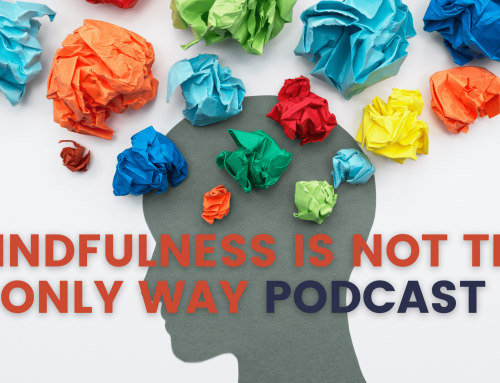Modern workplaces are changing rapidly, driven by disruptive digital technology which has forced whole industries to transform their business models. Over the last decade, we have seen revolutions in media, music, retail, financial services, IT, travel, hospitality, food and drink. Every industry has and will continue to be affected.
Successful transformation requires investment in new growth engines to drive future customer and shareholder value. Product innovation, technology, marketing, and sales are the key ingredients to fuel this business growth. But behind every excellent product, closed deal, marketing campaign, technology integration, M&A transaction and monthly P&L is an individual, and many of us are under mental and emotional stress, straining to keep up with this constant stream of change, extra responsibility and ever-growing targets.
In Australia, 11 million people are employed in some capacity, but research shows that as many as 33% feel that they are living with extreme stress, be it money- or work-related, and 68% of employees struggle to focus at work.
Work is a huge part of our life. We spend almost 1/3rd of our lives there, often stuck behind a desk, and many turning to coping mechanisms like eating and drinking sugar, coffee or alcohol, or eating fast food and ready meals. 60% of Australians consume more than 20 teaspoons of sugar per day, and all this combined is resulting in 1/3rd of Australians who are now obese. This has an enormous physical, emotional and financial cost, both to the individuals themselves and to society as a whole.
It doesn’t have to be this way.
Despite the volatile and changing modern world, our time at work needs to support our overall health, happiness, and wellbeing. Bearing this in mind, we’ve put together some ways we can make our office spaces healthier:
Create an office space that inspires productivity
Once upon a time, we clocked in and clocked out. Work was done at our desks, meetings in meeting rooms and when the clock struck five, we headed to the pub, home or whatever we chose to do outside of work. Today, the work environment is very different. We can work from wherever we choose to, constantly connected by the small and very powerful smartphone device that sits in your pocket. You can literally be in two places at the same time.
However, like a good athlete, training all the time without a break and time to recover does not lead to the best results. So as leaders we need to set a good example, by providing guidelines to team members so they are aware of what the cultural norms are. For example: Do people need to be in the office every day? Is working late encouraged? Are there ways of doing thing in a more efficient way? Are employee’s suggestions encouraged? Are employees encouraged to have breaks / down time where they can de-stress?
In France, they have taken things to a new level, by passing legislation that requires companies with more than 50 employees to establish hours when staff should not send or answer emails, enabling people to mentally recharge and recover.
Encourage a healthier working environment
As employees, we are all responsible for our own health and wellbeing. Though, given the amount of time we spend in the office, employers should encourage employees to be healthier by providing as many of these things as possible:
- Free, nutritious food
- A fully functioning gym, either on-site or with corporate discounts for local gyms and personal trainers to help employees improve their fitness
- Sleep pods, group meditation sessions, on-site massage therapy, reflexologists and other alternative health offerings
- Access to life coaches, physiotherapists, chiropractors, doctors and other health professionals
- 24/7 counselling, giving employees the opportunity to confide in a professional when they need it most
- Access to a concierge service, taking care of those life tasks that can draw focus away from work responsibilities
Whilst free food, on-site gyms and access to a range of health practitioners might sound like they are exclusive to bigger companies, this isn’t the case. Smaller businesses can make a massive difference to their bottom line, attracting and retaining the best talent by putting wellbeing at the centre of their strategy. Here are a few things employers can do:
- Buy a blender and provide healthy ingredients, enabling people to create their own healthy smoothies. This is something we do at SumoSalad – it also serves as a useful hub for communication. We’ve solved some big problems whilst blending a green smoothie!
- Encourage staff to grow food in their office spaces. Whatever nutritional theory you believe in, one thing common to all theories is that green leaves are nature’s medicine and we should all eat them every single day. By encouraging and enabling people to grow sprouts or plants in the office or outside, you’re teaching and encouraging people to adopt one of the healthiest habits possible.
- Provide access to fun personal trainers who make exercise entertaining. For example, SallyStrenf.com offers boxing as an activity at work which, in turn, inspires employees to become active at work – a great team-building exercise too.
Look at the whole person
Employees are individuals who have personal lives. What happens outside of work will impact their productivity in the office. Giving people the time and flexibility to resolve personal issues while simultaneously keeping their jobs open or enabling them to take extended leave to fulfil a life ambition will get rewarded with loyalty, advocacy, and retention.
Here are some of the mistakes often made:
- Not seeing the connection between employee experience and customer experience, and therefore not investing in the key touchpoints that create a positive culture (recruiting for values and attitude, creating a thorough and positive onboarding programme, creating a philosophy and ongoing training and support to enable people to take ownership and develop their careers)
- Perceiving wellbeing services as a cost only
These lifestyle services may seem like an extra expense, but when you calculate the cost of recruitment, training, and sick-leave in your business over the last year, I’m certain that it would be far cheaper to give your employees access to wellbeing services and to teach and enable them to keep well.
Top tips for dealing with workplace stress
In my book, Success without Stress https://amzn.to/2Kqpd37, I cover many tips for not only dealing with stress at work but converting that negative stress into positive energy. Tips outlined in the book include:
- reframing situations
- taking breaks
- upgrading nutrition and setting clear boundaries
However, the top tip that works well for me during those moments where I feel that the number of problems I must solve outweigh the amount of personal resources I have to solve them is called the “Yellow-Paper exercise.” Here’s how it works:
- Change your environment. Go to a café, beach or a place where you can think more clearly. Take an A3 sheet of blank paper with you.
- Do the “Yellow-Paper exercise.” This is basically writing all your tasks down. All the projects, the tasks, the calls to make. Everything. This is tremendously therapeutic, but don’t stop there.
- You then need to go through the tasks and ask yourself, what can I delete or delegate? Doing this exercise with a coach or someone with a unique perspective can save an enormous amount of wasted energy.
You will be left with a feeling of clarity rather than being overwhelmed. Stress at work can be caused by several reasons, so if you’re feeling stressed and the stress is chronic, then speak to someone who can help you reframe the problem and find a solution.
To find out more top tips to create a healthier office and workplace: Download the Free Guide to 20 things you can do to Energise your culture. http://bit.ly/2qHGa0N








